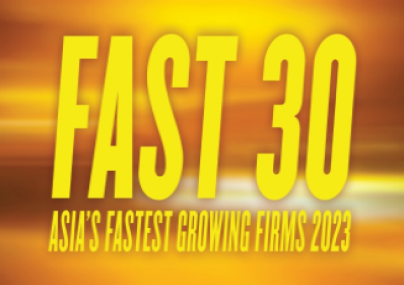
Donald Trump’s victory in the 2016 U.S. presidential election in early November could have dealt a critical blow to Singapore’s economy, which has had a lacklustre year and appears to be at risk of a recession.
After the economy contracted in the third quarter, the government slashed its growth forecasts for 2016 to 1.0-1.5 percent. Trump’s campaign promise to rip up international trade deals means that the light at the end of the tunnel is quite dim at the moment for Singapore, its open economy making it particularly vulnerable to U.S. protectionism.
Unsurprisingly, the legal sector has been feeling the effects of the slowing economy. “In the past ten months, privatisations have been one of the few significant areas of work,” says Patrick Ang, deputy managing partner at Rajah & Tann Singapore. “The capital markets space has improved compared to last year, but not at the same levels as previous years. On the banking side, there have been fewer transactions, and most of have taken longer, as banks have been generally more cautious.”
To compound things, in July, Singapore oilfield services firm Swiber Holdings filed for judicial management, facing hundreds of millions of dollars in debt. It was the biggest local name to fall victim within a sector that has been hard hit by a combination of weak oil prices, tumbling charter rates and clients either delaying or cancelling projects. Other firms in the sector could face difficulties as well.
“We think there’s going to be more cases of financial distress in this sector in the coming months,” says Ang. He adds that another sector under pressure has been construction, which has seen fewer projects in both the office and residential space.
There are some bright spots regionally, though. Firms are increasingly seeing more work across jurisdictions in Southeast Asia, especially M&A work. Ang says that the past year in particular has seen regional conglomerates, such as those from Thailand and the Philippines, investing outside their home markets.
However, from the perspective of foreign investors, some say the region’s key markets can expect to see a slowdown in 2017. However, there are still good and viable investment opportunities in various sectors such as infrastructure and projects, says Ang.
Andy Leck, managing principal at Baker & McKenzie.Wong & Leow, says that in broader Southeast Asian, the firm has seen growth in areas such as employment, regulatory, compliance and restructuring. “We’ve also seen an uptick in financial services, M&A and project development activity, particularly as Asian-headquartered banks continue to grow, invest and build market share,” he says.
“As Singapore operates as a hub within Asia much of our workflow is cross-border in nature, particularly transactional activity. Much of the deal flow for both local and international law firms in this market continues to be intra-regional in nature.”
CHANGING LANDSCAPE
Some of the bigger challenges facing law firms in Singapore come from within the industry itself, where intensifying competition is combining with fee pressures to make life particularly difficult for law firms.
“If you have many competitors but fees stay high, that takes away pressure,” says Ang. “But when you have more local and international competitors, clients looking to push down fees and the competitors willing to comply, it is a potent combination that leads to stress among the players.”
Lecksays adverse conditions are leading to a consolidation in the market. “A lot of this consolidation is driven by clients – they want support where they operate so firms are merging to grow their networks and practice coverage to ensure they can offer ‘full service’ support,” he says.
Leck adds that that the legal industry is like any other industry in that it is facing profitability and pricing pressures, just as our clients are. “Client demands for effective, efficient and cost-sensitive support are also driving a lot of the consolidation in the industry,” he says.
One of the most significant trends in the market is that work at some level is becoming increasingly commoditised. This is being driven to some extent by the entry of accounting firms into the space.
“As we see accountants getting into the business of law, this is posing a genuine threat for the industry,” says Ang. “They have seen their own work becoming commoditised, and they feel that can be done for some level of legal services as well.”
Ang also agrees that work like joint venture agreements, NDAs and basic due diligence are ripe for commoditisation. “We don’t see why technology plus a clever lawyer at a junior level can’t run that transaction with minimal supervision,” he says. “The lawyer can leverage on technology as well as the processes in place.”
However, at this point of time, most law firms frown on treating all work as the same. “That’s going to change,” predicts Ang. “Even when work seems slightly different, there are enough common aspects. Consultant and author Richard Susskind tells us that 80 percent of the work is the same. Another factor driving change in the industry is the evolving role of general counsel. “The changing business environment has caused GCs not to see their role as pure cost centres but also cost managers,” says Ang. “They are a lot more proactive , and well-versed as to what the best practices and technologies are. GCs see the technology in their own organisations, and are becoming convinced that lawyers should not see themselves as different from other businesses. This should cause the legal industry to ask themselves why they are different.”
INNOVATION, EFFICIENCY
Ang of Rajah & Tann feels that the firms most primed to succeed in this changing landscape are the ones that demonstrate efficiency. “I think efficiency is becoming a key differentiator, and that is going to be summed up by firstly expertise – which means becoming better at doing things quicker with fewer resources – and secondly, technology.”
Leck of Baker & McKenzie.Wong & Leow agrees. “Innovation and adopting change are key to thriving in this market,” he says. “No firm can stand still. We have to listen to our clients, respond to their needs and shape our business accordingly.”
That said, while technology is an enabler, it also comes with its own requirements of skills and budget. This is the challenge for many of the firms in Singapore at present, and as a result we have begun to see a differentiation between the ‘Big Four’ and the next level of firms,” says Ang.
As a result, mid-size full service firms are potentially at greatest risk in the market. “The question is where they should head,” says Ang. “If you’re caught in between, it will not be wise to stay in between. Hence we have seen some firms going regional or international while other firms will decide to go boutique.”
As part of Rajah & Tann’s commitment to innovation, it has introduced a couple of concepts, that are relatively new to the local market. One is R&T Asia Resources, a NewLaw initiative in the vein of Axiom and Lawyers On Demand. “It has certainly helped with costs, as the opportunity cost of seconding associates to clients was becoming prohibitive,” says Ang. “So we saved on costs and still earned the goodwill. It’s also a very low capex business – we get the fees even though we expend few internal resources. The margins are therefore not bad. I would like to bring this to the region, as I see great potential in expanding it.”
The second concept is fixed fee work. “We came up with a new division within the firm called Business Fundamentals,” says Ang. “We see a growth in startups [that] will need the services of lawyers but are unlikely to pay hourly charges.
The only thing that will work for them is fixed fee. We now have clients we didn’t use to have in the past. The margins aren’t the same, but having said that, the cost is lower. We’re not looking at immediate profit but instead at long-term investment in the client.”



